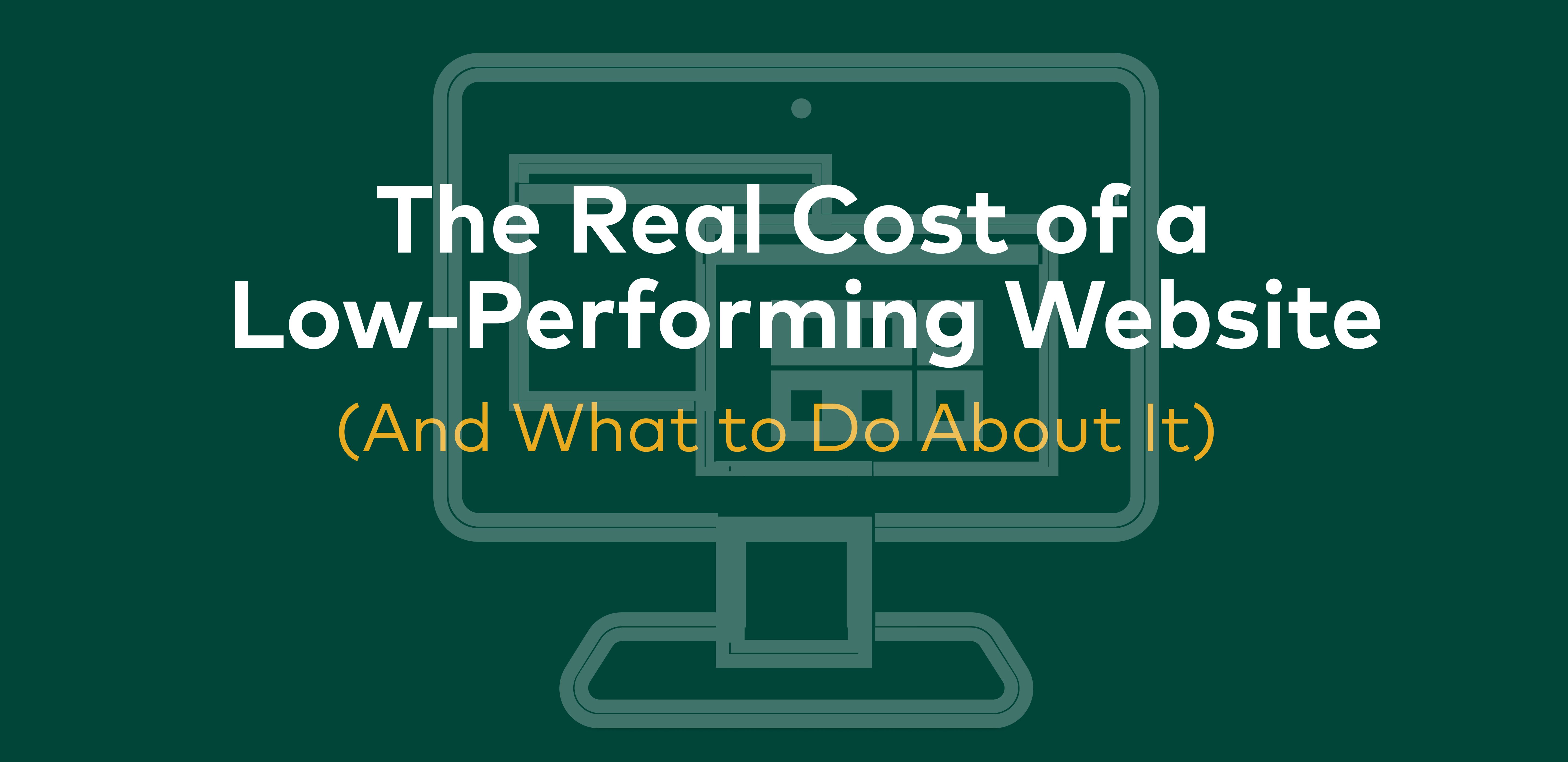
The Real Cost of a Low-Performing Website (And What to Do About It)
Let’s cut to the chase: if your website isn’t pulling its weight, it’s quietly draining your business—and your patience. Whether you're a team of two or two hundred, your customers expect a fast, functional, and frictionless experience. And if they don’t get it? They bounce — straight to your competitors.
The good news? You don’t need to overhaul everything at once. Start small. Learn from your customers. Optimize as you go. The important thing is to start. Then build the system around what you learn.
Here’s what a low-performing website is really costing you — and how to fix it.
Issue 1: Lost Leads = Lost Revenue
Problem: You wouldn’t hire a salesperson who ghosts customers. But that’s exactly what a weak website does. When your site isn’t optimized to capture or qualify leads, you’re silently bleeding revenue.
Fix:
- Optimize your site for conversion with clear calls-to-action and forms that actually work.
- Set up basic lead capture functionality (forms, calendar links, email opt-ins).
- Don’t wait for perfect—start with good. As traffic grows, layer in automations and testing.
Example: If you lose just one $10,000 lead/month, that's $120K/year out the door.
Issue 2: Operational Inefficiencies Slow You Down
Problem: When your website doesn’t talk to your CRM or sales tools, your team becomes a digital detective—chasing info, re-entering data, and losing momentum.
Fix:
- Start simple: Integrate your forms with your CRM or even a spreadsheet to begin.
- Automate basic follow-ups like confirmation emails or lead notifications.
- Plan for full integration over time — not on day one. Your team and systems need to evolve with it.
Let your website start generating revenue, then use that to fund the next phase.
Issue 3: Missed Opportunities From Outdated or Broken Experiences
Problem: If your site has broken links, outdated content, or glacial load speeds, you’re making a bad first impression—and may not get a second.
Fix:
- Review your site quarterly for outdated messaging or technical hiccups.
- Write content the way your customers search. Speak their language.
- Make key info easy to find—like services, pricing, and how to get in touch.
Your site is a 24/7 salesperson. Make sure it knows what to say.
Issue 4: Constant Fixes and Frantic Fire Drills
Problem: If your website breaks every time someone breathes on it, your team is wasting valuable hours on tech headaches instead of business growth.
Fix:
- Invest in proactive maintenance (updates, backups, security checks).
- Have a partner or team on call who can support and troubleshoot fast.
- Monitor performance over time so you’re not surprised by issues.
Your website should age like fine wine — not spoil like milk.
Issue 5: You Can’t Scale Without Integration
Problem: As you grow, disconnected tools = chaos. Leads get lost. Reports don’t match. Sales and marketing aren’t aligned.
Fix:
- Map out your key systems: CRM, email, calendar, scheduling, etc.
- Choose tools that talk to each other or have solid integrations.
- Use your website as the hub for data collection and lead routing.
A unified system = fewer headaches, faster sales cycles, and happier teams.
What’s the Right Starting Point?
You don’t need to “do it all” at once. In fact, you shouldn’t.
Start with:
- A strong core site (clear value prop, lead capture, service info)
- Messaging that matches what your team is saying and selling
- A feedback loop with your customers so your site evolves with them
Then iterate:
- Add integrations as your workflows mature
- Optimize based on what’s actually converting
- Keep it lean and manageable for your team
Launch what works. Improve based on real user feedback. Build what’s next.
Final Thoughts: From Digital Drag to Business Driver
Your website should work as hard as you do. That means:
- Generating and qualifying leads
- Supporting your team with clean, real-time data
- Streamlining your sales process
- Delivering measurable ROI
Working with a web design agency like Roadmap ensures you're not just building a pretty website—you’re building a tool that powers real business outcomes. Our team combines web design and development expertise with demand generation, demand capture, ongoing support and analysis.
Not sure where to start? That’s where we come in.
Book a Website Workshop with Roadmap Agency
As a results-driven web development agency, we’ll help you map out what matters most right now, and build a website that can grow alongside your business—one phase at a time.
Start now. Iterate later. Grow continuously. Your expert Roadmap web developer is ready when you are.
